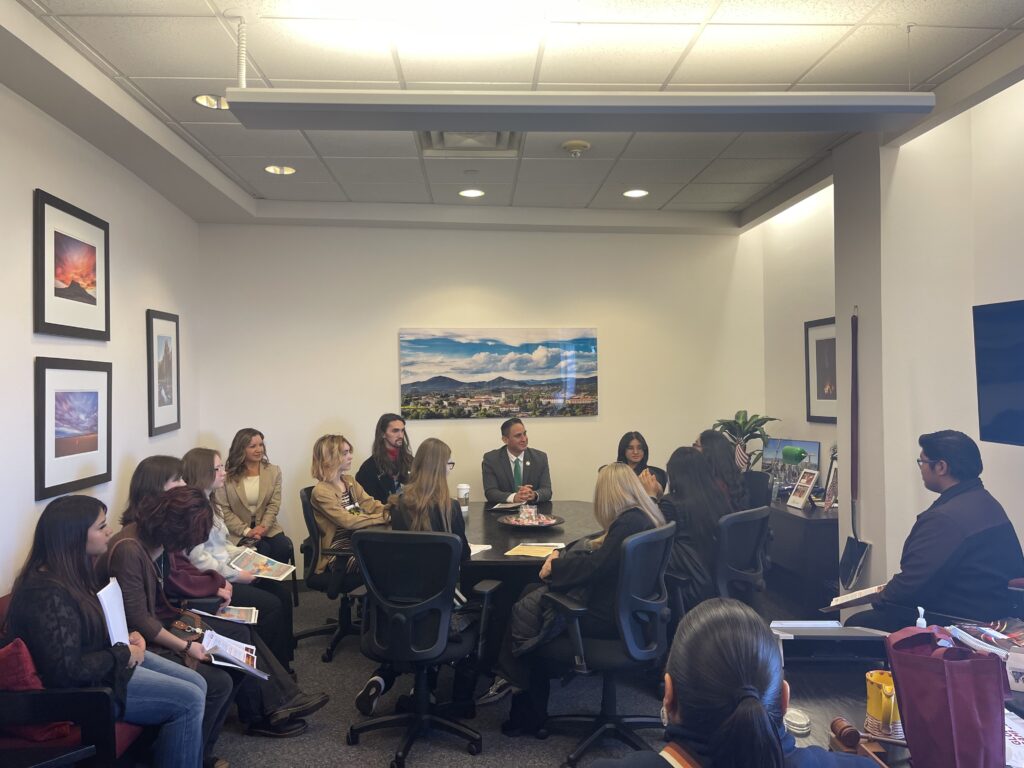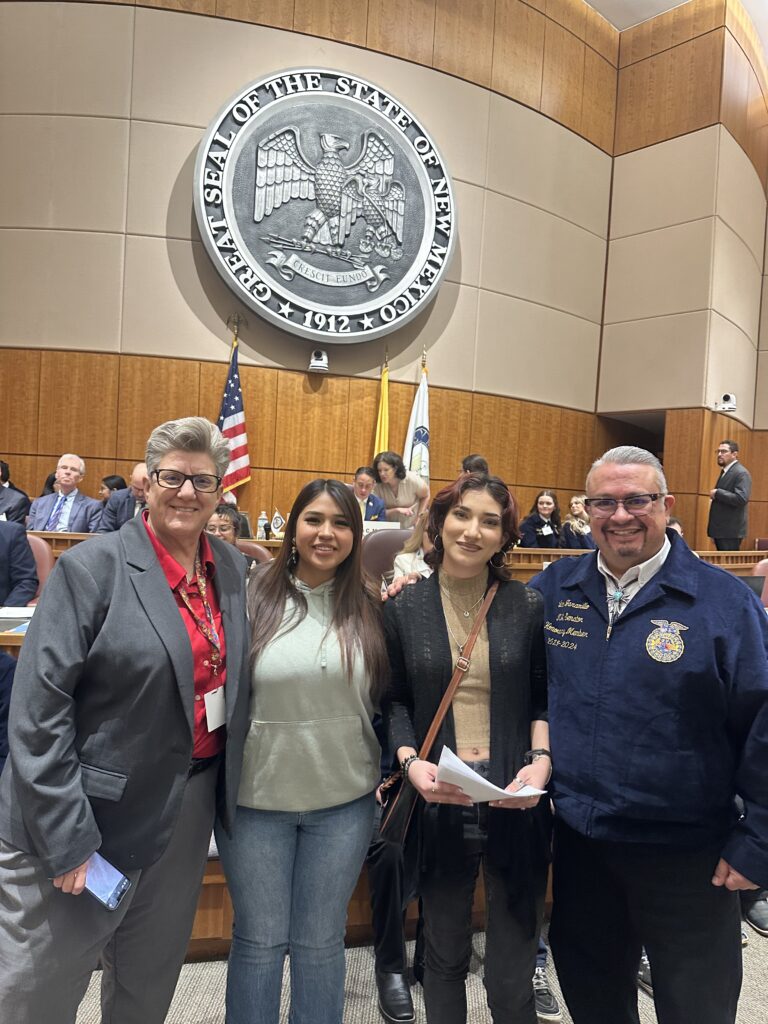Behavioral Health Reform Must Include New Mexico’s Youth
Since this blog was written, SB 1 and 3 have passed and been signed by the Gov. These bills create the framework for the BH Reform initiative. HB 2, which contains the budget, has not been finalized by the legislature and has not been signed.

Future Focused Interns and Dr. Kim Lanoy-Sandoval meeting with legislators at the Roundhouse during the 2025 legislative session.
Behavioral Health in the Legislative session
This week, youth from across the state have been gathering at the Roundhouse to participate in New Mexico’s 2025 legislative session. They are learning about the legislative process and meeting with policymakers to discuss issues important to them. Although lawmakers have listened to youth in other areas, their voices have been left out of the conversation on behavioral health–despite the fact that these issues have a direct impact on their well-being.
The State of New Mexico is poised to spend $100 million on behavioral health reforms in the 2025 legislative session. Future Focused Education applauds and supports the State’s effort. Yet, we are concerned and must call attention to the absence of young people and public school voices in the bill because we know that meaningful behavioral health reform must include education. Plus, careers in behavioral health can and should start in high school.

Young people meeting with Lieutenant Governor of New Mexico, Howie Morales.
The state of behavioral health in New Mexico
Our youth are dealing with mental health concerns daily. According to the National Council of Mental Health Well-Being, “One in five teens lives with a mental health condition. Half of all mental health conditions begin by age 14 and 75 percent begin by the mid-20’s. That means more teens than we think in the United States are struggling with a mental health challenge right now and many don’t know what to do.”
We don’t have enough behavioral health care providers or services in our state. According to the Social Workers of New Mexico Survey Report, “As of June 30, 2024, only 18.99% of the mental health care need in the state was met, well below the national average of 26.74%."
Meanwhile, a recent national survey indicated that only 40 percent of school administrators feel capable of dealing with the mental health challenges of the students they serve. Also, the surveys found that 80 percent of parents believe that schools should play a critical role in meeting the behavioral health needs of students. In other words, our schools aren’t equipped to meet the expectations of our families.
Young people tell us that peer support is a critical component of a successful strategy. Youth with high support from peers are nearly half as likely to attempt suicide (8.0%) as youth with low support from peers (16.2%) according to a New Mexico Department of Health report. Plus, for the last two years, the New Mexico Health Care Workforce Committee Report has suggested peer support as one way of addressing the shortage of mental health care workers in the state.
Behavioral health careers should start in high school. The social workers, therapists, and counselors of the future are in 11th and 12th grade and many of these young people live in communities where there are literally no behavioral health professionals. Dealing with the lack of capacity in our local communities is critical if we hope to deal with our mental health crisis as described in recent research by New Mexico Highlands University. Exposing young people to programs like Teen Mental Health First Aid training and access to paid internships is a vital piece of the puzzle we are assembling.
If we choose to overlook youth and the education sector in our planning and funding process, then we will miss the best opportunity to meet our communities’ behavioral health needs before they become a crisis. New Mexico has among the highest youth disengagement rates in the nation and there is a persistent call for more effective approaches to juvenile crime, which are signals that we must intervene earlier. If not, we can expect our behavioral health challenges to mushroom in the future.

Future Focused interns, Angelica Sanchez and Zoe Chavez - both seniors at RFK high school - have been advocating and asking senators to prioritize youth mental health in our schools and to protect the rights of all young people.
Where we are and what we need
We have assembled a wide variety of knowledgeable behavioral health professionals, higher education partners, schools and districts, and young people from around New Mexico. As partners, they create the Community Care Collective, bringing expertise in adolescent mental health, education, and behavioral health workforce development.
We have three suggestions that will help rectify oversights in the present behavior health reforms making their way through legislature:
- Include funding for Behavioral Health Infrastructure and Capacity Building within the Senate Bills 1, 2, and 3.
- Ensure that the Legislative Education Study Committee recommendation for $3.0 million be included in the budget.
- Include Behavioral Health in the At Risk factor as a strategy to engage vulnerable students.
The lack of funding and attention to schools as critical components of a statewide behavioral health strategy is an oversight and there is time to correct it during the 2025 legislative session.
The clock is ticking; the time for change is now.


